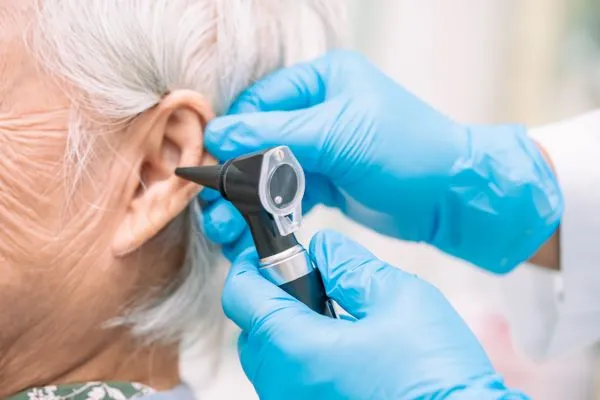Use These 6 Tips To Code Hearing Tests Successfully
Start by knowing what’s included in an E/M visit. If your practice includes an audiologist, it’s a good idea to periodically take stock of your audiology know-how to ensure you’re on top of all the processes that come into play when reporting these services. Keep handy these six helpful pointers to ensure your audiologic function test claims coding runs smoothly and efficiently. 1. Remember Basic Hearing Tests Are Part of ENT Exams The easiest way to distinguish between an audiologic function test and a basic hearing test is by confirming the use or non-use of calibrated electronic equipment. This equipment allows the provider to record the results and provide a subsequent interpretation. More specifically, the test outcomes will be detailed in graph form, which the provider will interpret. On the other hand, a physician may perform a series of basic hearing tests (tuning fork, whispered voice, finger rub), which do not meet the criteria for an audiologic function test. CPT® Assistant (August 2014; Volume 24, Issue 8) further reiterates this point by explaining that these procedures “are considered part of general otorhinolaryngologic services included in [evaluation and management] E/M services, and are, therefore, not reported separately.” “Basic hearing testing is part of the ear exam, and that is where one would expect to find this manual evaluation — as part of the medically necessary exam as part of the 2021 evaluation and management (E/M) documentation. The results of the medically appropriate history and exam, including this manual exam of the patient’s hearing, will support the medical necessity of audiologic function testing,” adds Barbara J. Cobuzzi MBA, CPC, COC, CPC-P, CPC-I, CENTC, CPCO, CMCS, of CRN Healthcare Solutions of Tinton Falls, New Jersey. 2. Identify Key Elements That Distinguish 92551 From 92552 The underlying difference between 92551 (Screening test, pure tone, air only) and 92552 (Pure tone audiometry (threshold); air only) is that 92551 is utilized as a screening exam, identifying the presence or absence of a potential hearing problem, whereas 92552 is used as a diagnostic examination, assessing the nature and degree of hearing loss. The evaluation involved in 92552 is, therefore, more comprehensive and results in a generated specific diagnosis; 92551, on the other hand, results in the patient either passing the exam or failing the exam and being referred for additional testing. Note test nuances: When the provider performs a screening test, the patient is instructed to respond to a series of tones at various octaves, but the intensity level remains constant. A threshold examination will vary the levels of intensity as well as frequency in order to better gauge the softest level at which a patient can hear. Tip: Intensity level simply refers to the volume level of the tone. Frequency refers to the pitch of the tone. 3. Recognize When To Report Audiometry With 92553 When reporting pure tone audiometry, pay close attention to testing methodology. Code 92552 describes measurements to determine hearing thresholds by air conduction only, whereas 92553 (Pure tone audiometry (threshold); air and bone) involves the performance of both air conduction and bone conduction tests to determine the type of hearing loss. Don’t miss Medicare’s policy: If an audiological diagnostic test, such as 92553, is not broken into two parts — a professional component (PC) and a technical component (TC) — only an audiologist, physician, or non-physician practitioner (NPP) can provide the service and bill with their individual National Provider Identifier (NPI) for Medicare Part B patients. “An oto technician may not perform the test while the audiologist, physician, or the NPP does the interpretation. Only audiometric tests that have professional and technical components may be performed by oto technicians, such as CPOP [Certificate Program for Otolaryngology Personnel (CPOP)]-trained staff,” Cobuzzi explains. Again, this rule limiting the use of oto/audio technicians only applies to Medicare Part B beneficiaries. 4. Know When To Opt for a Combination Code If you’re coding audiology services, be sure to get a rundown of which codes to report when the audiologist performs a series of tests and take note of which codes can be combined into a more comprehensive CPT® code. For example, instead of reporting 92567 (Tympanometry (impedance testing)) with 92568 (Acoustic reflex testing, threshold), you should report the all-encompassing code 92550 (Tympanometry and reflex threshold measurements). Additionally, when the provider performs 92553 and 92556 (Speech audiometry threshold; with speech recognition) during the same encounter, you’ll use the comprehensive code 92557 (Comprehensive audiometry threshold evaluation and speech recognition (92553 and 92556 combined)). 5. Don’t Forget About Automated Category III Codes If your practice offers forms of automated audiometry, then you should look no further than Category III codes 0208T (Pure tone audiometry (threshold), automated; air only) through 0212T (Comprehensive audiometry threshold evaluation and speech recognition (0209T, 0211T combined), automated). Report these codes when patients utilize a computerized display unit (PC or tablet) to listen to the tones and document their responses. Tip: You may use 0208T-0212T when automated audiometry is performed either alone or in combination with manual audiometry. For example, if the provider performs full speech testing and obtains pure tone air and bone thresholds in an automated fashion, you should not submit 92557. Instead, report these two procedures with 92556 and Category III code 0209T (Pure tone audiometry (threshold), automated; air and bone). 6. Use Modifier 52 for Unilateral Services Finally, it’s important to know which hearing test codes are inherently bilateral. Have a look at this National Correct Coding Initiative (NCCI) Policy Manual guideline: “Audiologic function testing (CPT® codes 92550-92588) includes testing of both ears, and only one unit of service for any of these CPT® codes may be reported for the described testing on both ears. If only one ear is tested, the appropriate CPT® code should be reported with modifier 52 [Reduced services].” “It is common to test only one ear for patients who already have a hearing aid in one ear,” Cobuzzi explains. Stacy Chaplain, MD, CPC, Development Editor, AAPC


